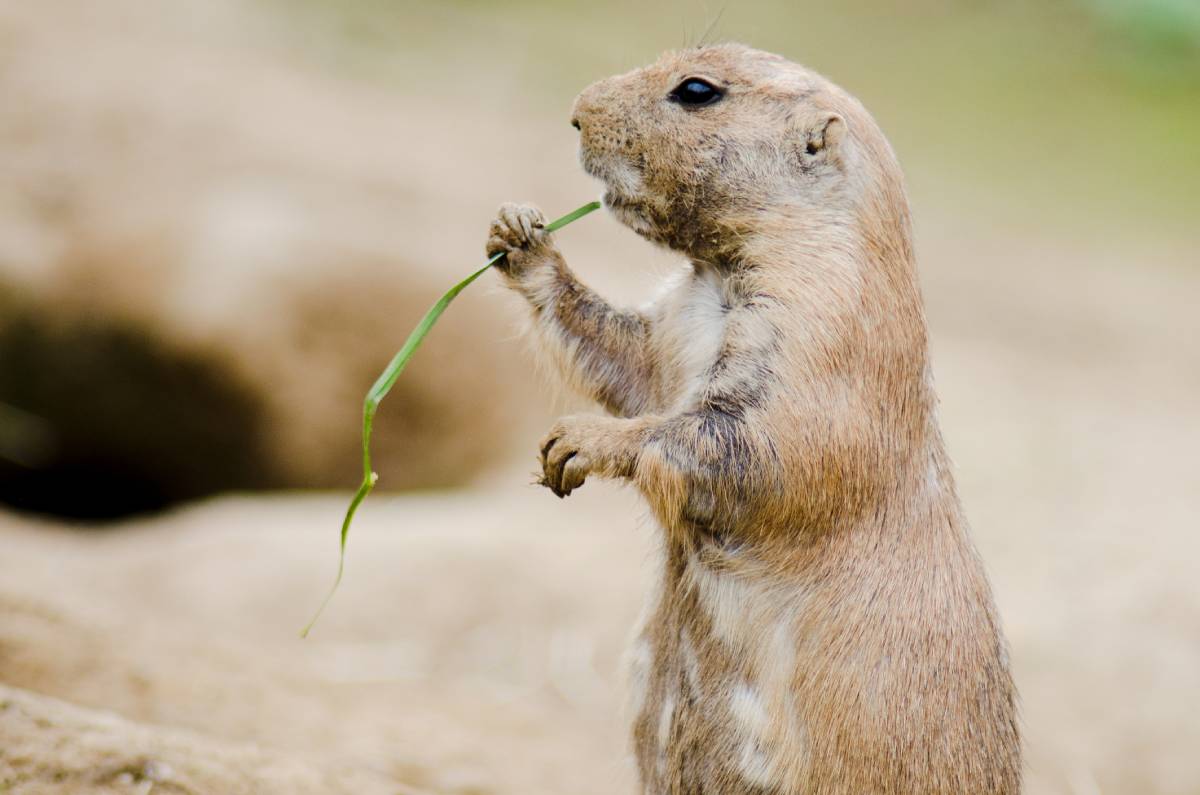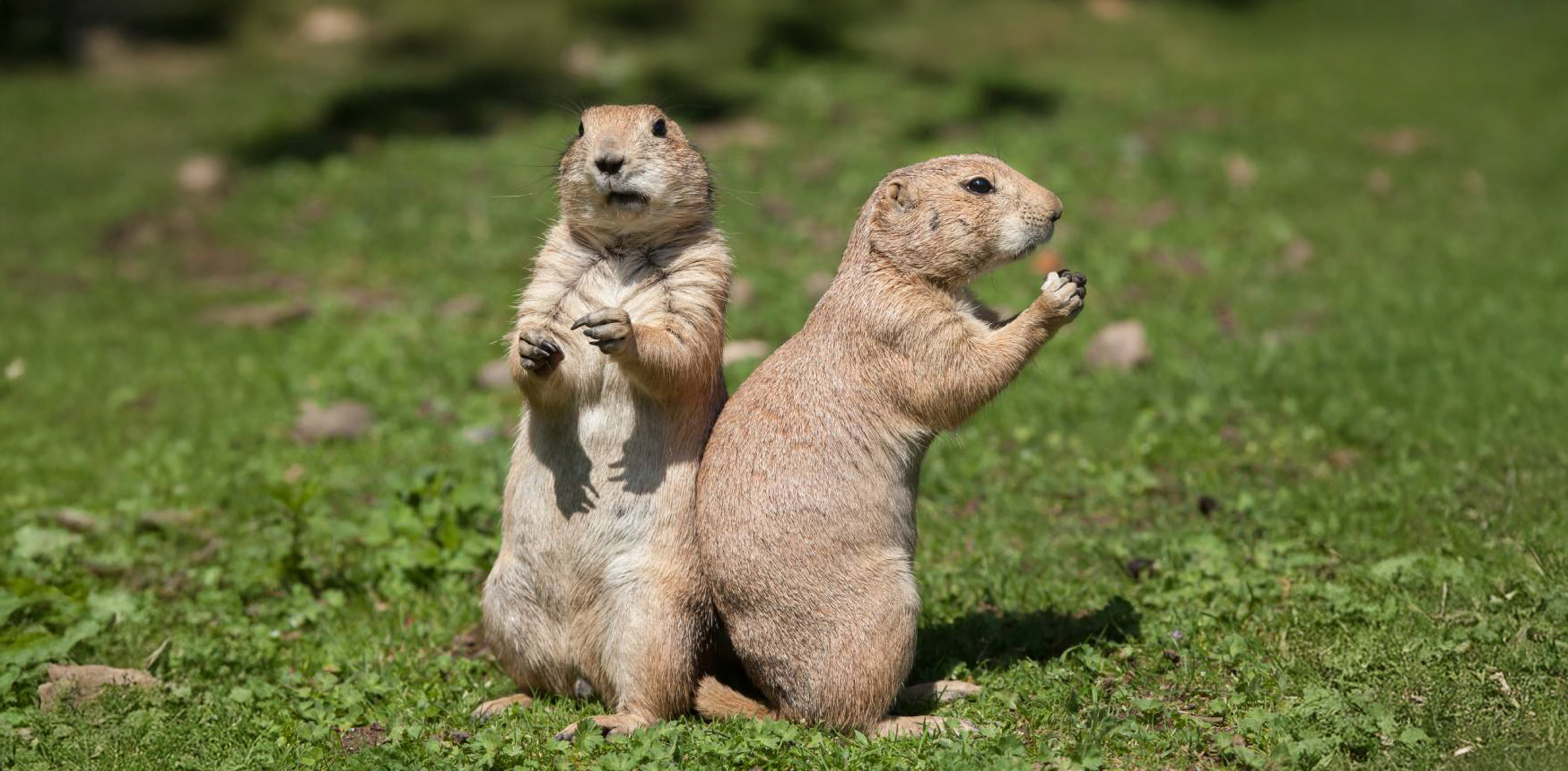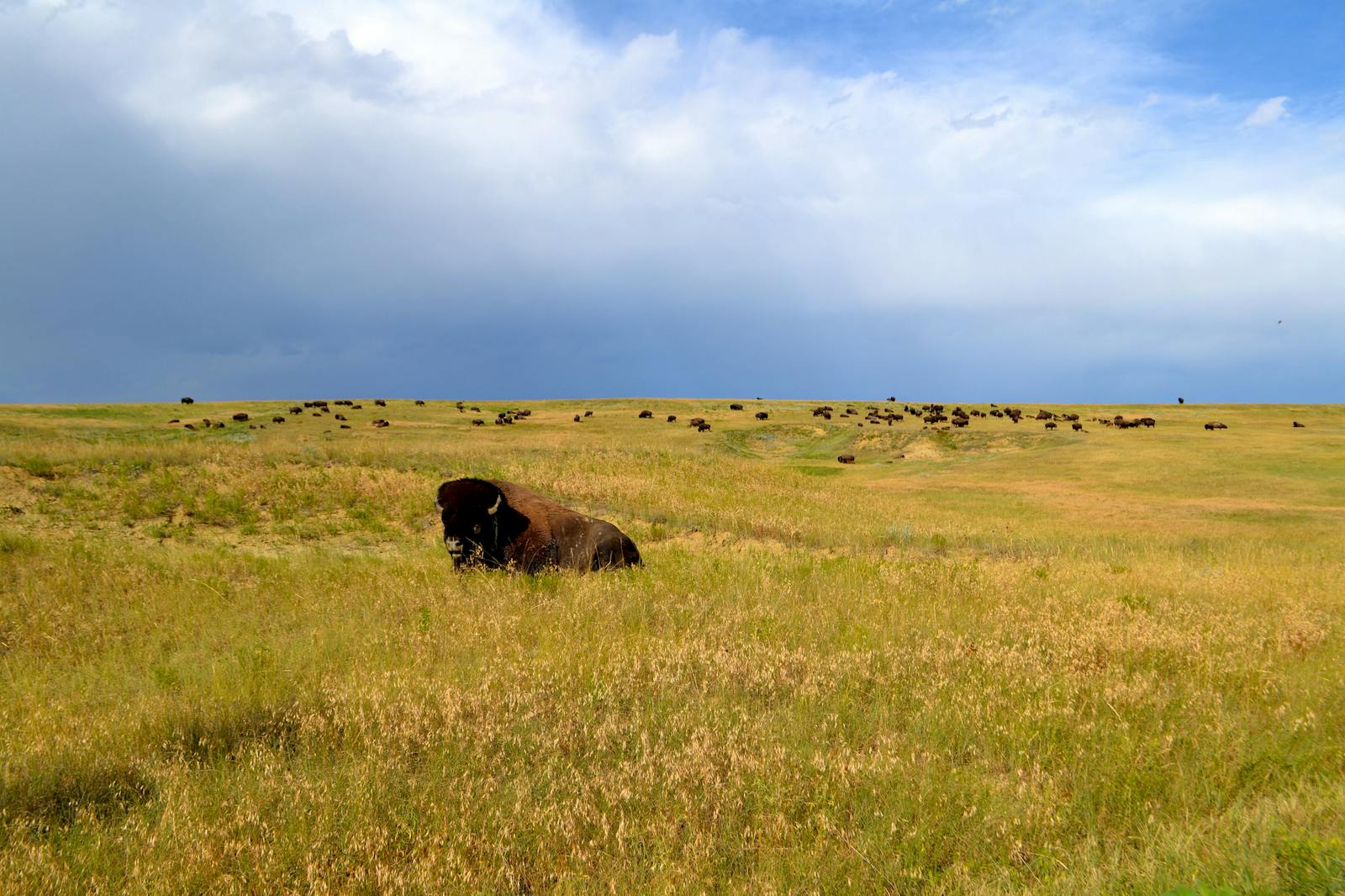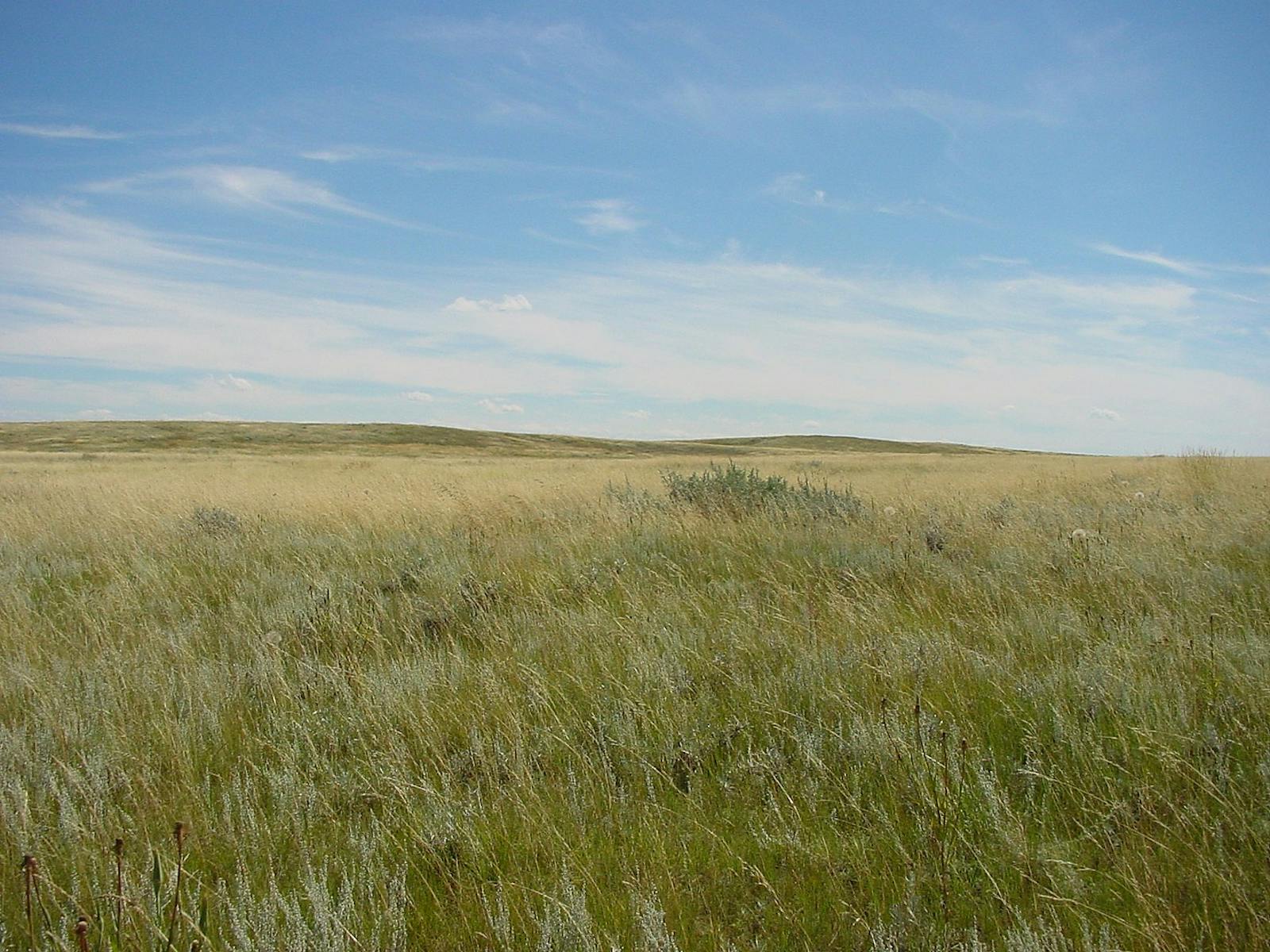Northern Shortgrass Prairie
The ecoregion’s land area is provided in units of 1,000 hectares. The conservation target is the Global Safety Net (GSN1) area for the given ecoregion. The protection level indicates the percentage of the GSN goal that is currently protected on a scale of 0-10. N/A means data is not available at this time.
Bioregion: Northern Prairie & Aspen Forests (NA12)
Realm: Northern America
Ecoregion Size (1000 ha):
71,894
Ecoregion ID:
396
Conservation Target:
39%
Protection Level:
1
States: United States: NE, SD, ND, WY, MT. Canada: SK, AB
The immense Northern Shortgrass Prairie, sprawling across five US states and two Canadian provinces, is the largest grassland ecoregion in North America. The Canadian Aspen Forests and Parklands ecoregion wraps around the northern and eastern sides of the Northern Shortgrass Prairie. To the south are the Central Tallgrass Prairie, Nebraska Sand Hills and Mixed Grasslands, Western Shortgrass Prairie, Colorado Rockies Forests, and Wyoming Basin Shrub Steppe ecoregions. Most of the western boundary is within the Montana Valley and Foothill Grasslands ecoregion. Embedded within the Northern Shortgrass Prairie ecoregion are isolated ranges and their foothills and forests, including the Black Hills (SD, WY), Bighorn Mountains (WY, MT), Big Snowy Mountains (MT), Little Rocky Mountains and Bears Paw Mountains (MT), and Cypress Hills (SK, AB).

The flagship species of the Northern Shortgrass Prairie ecoregion is the black-tailed prairie dog.
This ecoregion is very poorly protected, with only 4% of its area within protected areas, but still retains 28% of its habitat outside of protected areas in relatively intact condition, thus providing an opportunity for ecological recovery.
The Northern Shortgrass Prairie is distinguished from other grassland ecoregions in North America by its harsh winter climate, much of its precipitation falling as snow, short growing season, periodic severe droughts, and short-statured vegetation. Two strong environmental gradients that affect the vegetation, flora, and fauna are increasing temperatures from north to south and increasing precipitation from west to east.
The vegetation in the Canadian portion of this ecoregion often resembles mixed-grass prairie more than shortgrass prairie. The mean annual temperature is this northern part of the ecoregion ranges from 3.5ºC to 5ºC, with a mean summer temperature of 16ºC and a mean winter temperature of -10ºC. Late summer drought is common due to low rainfall and high evapotranspiration.
.jpg)
Herd of bison. Image credit: Creative Commons
The dominant grassland plants in the Prairie include grama grasses, needlegrass, and wheatgrass, with the Canadian portion having mostly spear grass, blue grama grass, wheatgrass, and to a lesser extent June grasses and dryland sedges. Common shrubs include big sagebrush and silver sagebrush, and cacti such as prickly pear, yellow cactus, and pincushion occur on dunes and other dry sites. River terraces have trees, especially quaking aspen, cottonwood, willow, and box-elder. Saline sites support alkali grass, wild barley, greasewood, red samphire, and sea blite.
The Great Sand Hills of Saskatchewan, with 1,900 km2 one of the largest active sand dune complexes in Canada, escaped cultivation due to their poor soils and contain outstanding natural communities. The nearby Grasslands National Park, on the Montana border, also is highly significant ecologically and contains Canada’s only population of black-tailed prairie dogs, once probably the most abundant mammal across the U.S. portion of this ecoregion.

Black-tailed prairie dogs. Image credit: Dreamstime
Other characteristic mammals include bison, pronghorn, bighorn sheep (documented by the Lewis and Clark Expedition for the first time in North America at the Upper Missouri River Breaks, within this ecoregion), elk, mule deer, white-tailed deer, bobcat, puma, Plains grizzly bear (now apparently extinct), coyote, swift fox, and reintroduced black-footed ferrets. Reptiles include short-horned lizard and prairie rattlesnake.
Notable birds of this ecoregion include sharp-tailed grouse, greater sage-grouse, northern harrier, Swainson’s hawk, ferruginous hawk, burrowing owl, piping plover, mountain plover, upland sandpiper, long-billed curlew, marbled godwit, loggerhead shrike, horned lark, Sprague’s pipit, clay-colored sparrow, Brewer’s sparrow, lark sparrow, savannah sparrow, grasshopper sparrow, McCown’s longspur, and chestnut-collared longspur.
Dryland farming, hay production, and livestock grazing have greatly transformed the Northern Shortgrass Prairie, with additional threats including oil and gas development and road-building. Priority conservation actions for the next decade are: 1) expand the existing protected areas in the ecoregion and acquire additional areas to better represent the full range of ecosystem types and provide enhanced connectivity among reserves; 2) reduce agricultural expansion and oil and gas development; and 3) recover populations of imperiled species, including herds of bison, grizzly bear, and gray wolf.
Citations
1. Ricketts, T.H. et al. 1999. Terrestrial Ecoregions of North America: A Conservation Assessment. Island Press, Washington, D.C.
2. Shortgrass Prairie. https://en.wikipedia.org/wiki/Shortgrass_prairie
3. Scientific Advisory Committee (D. Gauthier, R. Noss, P. Diaz, P. James, B. Noble, and B. Cecil). 2007. Great Sand Hills Regional Environmental Study. University of Regina, Regina, SK.




